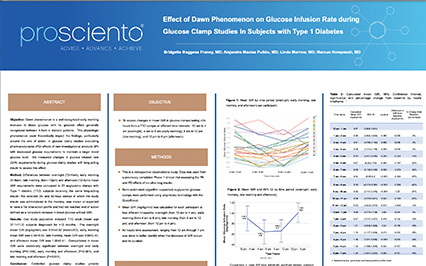About
Dawn phenomenon is a well-recognized early morning increase in blood glucose with its greatest effect generally recognized between 4-8am in diabetic patients. This poster details how physiologic phenomenon impacts the findings, particularly around the end of action, in glucose clamp studies evaluating pharmacodynamic (PD) effects of new investigational products (IP) with decreased glucose requirements to maintain a target blood glucose level. We measured changes in glucose infusion rate (GIR) requirements during glucose clamp studies with long-acting insulin to assess this effect.
Differences between overnight (12–4am), early morning (4–8am), late morning (8am–12pm) and afternoon (12-4pm) mean GIR requirements were compared in 21 euglycemic clamps with type 1 diabetic (T1D) subjects receiving the same long-acting insulin. We selected 36- and 42-hour clamps in which the study insulin was administered in the morning, was known or expected to have a flat time-action profile and had not reached end of action defined as a consistent increase in blood glucose without GIR.


